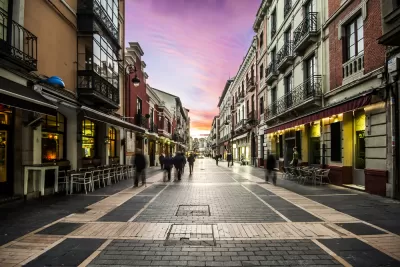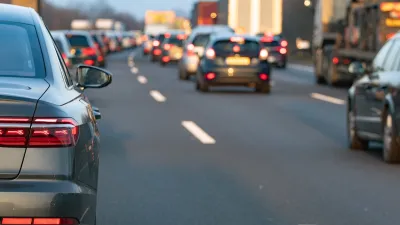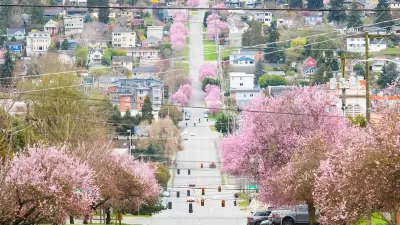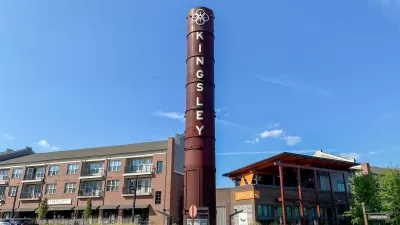A new study explores how the built environment influences vehicle miles traveled.

New research based in Massachusetts suggests policy action in six areas to reduce driving in the state—none of which include widening roads.
Instead, researchers at the State Smart Transportation Initiative have identified characteristics of development that factor into vehicle miles traveled:
- Land use mix (average distance between homes and the nearest retail establishment)
- Household density (households per square mile of land area)
- Sidewalk coverage (percentage of road miles with a sidewalk at least 3 feet in width)
- Transit access (average distance between homes and the nearest transit stop)
- Intersection density (number of intersections per square mile)
- Managed parking (block groups with a single-use parking structure within 1 mile scored 1, others scored 0)
"The only policy options expected to reduce 2040 passenger VMT below 2010 levels involved changes to all six variables," writes SSTI's Bill Holloway. "However, policies that adjust only a single variable could also make a significant difference."
The largest impact of any single policy change would come from increasing land use mix, which could reduce VMT by 4.3 percent.
"Siting stores and other destinations within walking distance of where people live is one of the most powerful ways to reduce car traffic," Streetsblog explains.
FULL STORY: A Six-Point Plan to Cut Traffic

Alabama: Trump Terminates Settlements for Black Communities Harmed By Raw Sewage
Trump deemed the landmark civil rights agreement “illegal DEI and environmental justice policy.”

Study: Maui’s Plan to Convert Vacation Rentals to Long-Term Housing Could Cause Nearly $1 Billion Economic Loss
The plan would reduce visitor accommodation by 25% resulting in 1,900 jobs lost.

Why Should We Subsidize Public Transportation?
Many public transit agencies face financial stress due to rising costs, declining fare revenue, and declining subsidies. Transit advocates must provide a strong business case for increasing public transit funding.

Wind Energy on the Rise Despite Federal Policy Reversal
The Trump administration is revoking federal support for renewable energy, but demand for new projects continues unabated.

Passengers Flock to Caltrain After Electrification
The new electric trains are running faster and more reliably, leading to strong ridership growth on the Bay Area rail system.

Texas Churches Rally Behind ‘Yes in God’s Back Yard’ Legislation
Religious leaders want the state to reduce zoning regulations to streamline leasing church-owned land to housing developers.
Urban Design for Planners 1: Software Tools
This six-course series explores essential urban design concepts using open source software and equips planners with the tools they need to participate fully in the urban design process.
Planning for Universal Design
Learn the tools for implementing Universal Design in planning regulations.
Caltrans
Smith Gee Studio
Institute for Housing and Urban Development Studies (IHS)
City of Grandview
Harvard GSD Executive Education
Toledo-Lucas County Plan Commissions
Salt Lake City
NYU Wagner Graduate School of Public Service





























